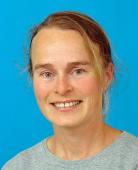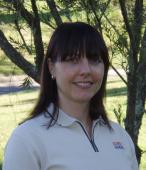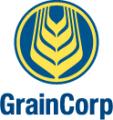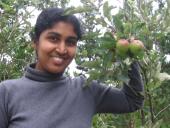fruit fly
Olivia travelled to Central (Guatemala) and North America (Mexico, Florida and Hawaii) to obtain knowledge and skills in mass-rearing techniques and quality management of parasitoid wasp production
TRAVEL DETAILS
REYNOLDSO
When: June 2009
Location: Central and North America
Summary:
Olivia Reynolds travelled to Central and North America to obtain knowledge and skills in mass-rearing techniques and quality management of parasitoid wasp production.
LOCATION
This project was an extension of an earlier scoping project CRC30014 that developed software to collect surveillance data via small personal digital assistants (PDA) devices.
The software developed enhances the conformity and integrity of data collected during urban surveillance activities.
There were two central aims of the second phase project. The first was the delivery of the urban surveillance software to a greater number of surveillance personnel as well as mapping the best method for the integration of collected data into national initiatives such as The Australian Biosecurity Intelligence Network (ABIN) and Biosecurity Surveillance Incident Response and Tracing (BioSIRT).
The second aim of the project was to provide the post-harvest grains industry with a system to digitally collect and collate all grains pests surveillance information (presence/absence of emergency plant pests (EPPs), resistance to phosphine and fumigation/treatment records).
The project introduced a system that provides for seamless digital collection and collation of all surveillance related biosecurity information for the post-harvest grains industry. The system has built in checks to ensure data integrity and it is proposed that collected data may also directly interface with BioSIRT. This means it has the capacity to easily interface with other compliant (national and other) systems and also provides a development path into the future, which could include initiatives like ABIN.
This project allows the rapid and efficient use of all surveillance data to maintain and protect markets for the Australian grains and potentially other agricultural/horticultural industries.
Research outcomes:
PDA Phase Two project successfully developed and deployed six main applications:
- Biosecurity hazard site surveillance
- Multi-pest surveillance (MPS, BioSIRT compatible)
- Khapra beetle surveillance
- Forest plantation pest surveys (IPMG)
- MyPestGuide mobile pest datasheets
- Urban plant pest surveillance (USDB)
- Dermestid surveillance
- Stored grain ecology studies
- European wasp surveillance
- Exotic dung beetle surveys
- Locust surveys
- Tramp ant surveys
The Urban Surveillance Database was built with generic plant biosecurity surveillance in mind and has been adapted for a number of diverse projects. It services the popular need for recording property and contact details, one-is-to-many geo-located and barcoded activities (including digital image), one-is-to-many inspections of activities, one-is-to-many specimen details can be added with barcoded specimen labels and photograph.
Field-collected data are synchronised (two-way data transfer) from anywhere in the world via GPRS, WiFi to a wireless server hosted at DAFWA where it is available for further analysis and reporting.
Smartphone pest identification tools have become popular and can be used in conjunction with USDB to ensure rapid field recognition of potential Emergency Plant Pests. This project developed two database-driven smartphone apps (MyPestGuide & PestWeb Mobile). Individual pest records are added on the wireless server and pushed out to devices. These smartphone identification tools can be deployed as a shell for overseas users, or pre-populated with quarantine pests of significance.
Collaboration with CRC for Forestry resulted in development of the mobile software solution, called IPMG Plantation Health. This software allows foresters to quickly and accurately record pest and disease outbreaks in the field, including; the date of the observation, the extent and severity of any damage caused, GPS co-ordinates and photos. The software also includes brief weed and pest field guides to aid foresters with correct identification in the field.
Research implications:
A high proportion of Australia’s agricultural produce is exported and demonstration of freedom from certain plant pests and diseases is critical to maintaining and securing new market access opportunities. Pest surveillance is an important tool for market access and accordingly importing countries now demand accurate, credible evidence to confirm pest freedom status.
In the past nearly all field-collected plant biosecurity surveillance information was recorded manually to paper reducing the rate of capture, integrity, conformity as well as security of the data. There is a growing need for plant pest surveillance data collection software and hardware that uses smartphones to provide auditing validation, ‘chain of evidence’ as well as increasing the volume of data collected and its integrity through relational databases and seamless data transfer to corporate systems. Smartphone data integrity is supported by GPS-located traps, digital voice navigation itineraries, time and date stamps, field printed barcode labels, site and pest imagery.
Pest identification tools delivered via smartphones are an important tool that allows immediate identification of potential biosecurity threats in the field.
Acknowledgements:
The following CRCNPB participants provided constructive criticism during development of the applications; Michelle Chami, David Cousins, Oonagh Byrne, Marc Widmer, Richard Johnston, Mike Grimm, Peter Gillespie, Deborah Kent, Cain Roberts, Paul Pheloung, Greg Hood, Steve Pratt and Deb Riddell.
Brian McCornack (KSU), Gordon Gordh (USDA) provided a useful US perspective.
Francisco Tovar (CRC Forestry/ Murdoch University) designed the IPMG application. Peter Davis demonstrated the potential for USDB in ant surveys on Barrow Island.
PROJECT LEADER

Assoc Prof Giles Hardy
Project Leader CRC70085: Personal Digital Assistants (phase two)
g.hardy@murdoch.edu.au
Phone: 08 9360 6272
Fax: 08 9360 6303
Read More
PROJECT DETAILS
Complete
Term
July 2009 – April 2012
Budget
$1,371,600 (cash and in-kind support)
PROGRAM DETAILS
LOCATION
This project will aim to investigate and model the role of different host plants and sources of those plants (e.g. commercial versus domestic) in the regional population dynamics of Q-fly as an aid to developing area-wide management as a pre-harvest market-access tool.
What is the biosecurity problem?
Fruit flies represent the single most significant phytosanitary barrier for domestic and international market access for most fruit and some vegetable commodities. Many horticultural industries in Australia which produce fruit fly host commodities need enhanced export opportunities to remain viable. Export markets and some domestic markets frequently require that rigid phytosanitary protocols must be implemented to guarantee that commodities are free from fruit fly. Australian commodity producers and exporters already work within an environment where we have a number of key domestic fruit fly pest species (especially Bactrocera tryoni, a.k.a Queensland fruit fly or Q-fly), but the situation could, at any time, become significantly worse with 47 exotic fruit fly species listed in industry biosecurity plans.
The main outputs of this project are to:
- help substantially to increase our knowledge of the interactions between individual frugivores (in this case fruit flies) and the impact this has on emergent properties, such as population size
- develop experimental and theoretical links between autecology (the ecology of individuals) and population ecology, and
- impact on management recommendations for fruit flies, particularly with respect to managing non-crop sources of fruit flies, including post-picking fruit, feral fruit and native fruit.
Who will be the end-users of this research?
The end users will be field based fruit fly researchers who advise local consultants and growers. Information will also be incorporated into the outputs of larger CRCNPB fruit fly projects.
STUDENT
PROJECT DETAILS
Active
Supervisor
Assoc. Prof Anthony R Clarke and Dr Raghu Sathyamurthy (Queensland University of Technology)
Term
August 2008 - August 2011
LOCATION
The symposium afforded me the opportunity to meet biological control specialists who use inundative releases of Hymenoptera parasitoids for fruit fly management, including Professor Russell Messing and members of his lab. Professor Messing is a collaborator on the CRCNPB project and is based in Hawaii, where I will visit in June.
TRAVEL DETAILS
REYNOLDSO
When: February 2009
Location: Christchurch, New Zealand
Summary:
Dr Olivia Kvedaras recently attended the Third International Symposium on the Biological Control of Arthropods.
LOCATION
Under the WTO there is increasing pressure on countries to comply with agreed sanitary and phytosanitary standards (SPS) to satisfy trading partners and to access markets. Such SPS conditions apply equally to developed and developing countries, however the latter often lack the expertise, infrastructure and organisational processes required to meet such standards. Together, these elements form the Plant Health System of a country and serve both its trading activities and crop protection needs.
Plant pest diagnostics is at the heart of any Plant Health System and countries that do not have the ability to identify its pests cannot satisfy the requisite SPS conditions for trade. Nor can they protect against the incursions of pests or manage the pests that damage crops. The lack of a Plant Health System is then a huge impediment to economic growth for developing countries.
Research outcomes:
We designed training activities and implemented a workshop program to improve the capability and capacity of plant pest diagnostics in Thailand. The program focussed on current technologies to provide Thailand with fundamental systems and processes that will provide greater efficiencies in diagnostics and which can be expanded across the Thai Plant Health system. The program focussed on providing molecular identification, traditional taxonomy, digital knowledge systems and remote microscopy which led to the following outcomes.
- A Molecular diagnostic laboratory was established in Thailand and staff were embedded in Australian laboratories to learn up-to-date molecular techniques and work practices. The high level of skill attained by Thai scientists was demonstrated in their ability to routinely perform molecular techniques in their own lab, to train their own staff in molecular techniques and to develop diagnostic protocols and optimise existing tests for their own purposes. The focus of this training was on trade sensitive pest groups, such as citrus canker, Huanglongbing, viruses, nematodes, fruitfly and seed-borne bacterial pathogens, to give a good grounding in molecular identification.
- The discovery of new fungal pathogens and the documentation of known pests during the course of this project indicates that staff were able to apply taxonomic principles as well as molecular techniques to verify pest identification. Digital technologies such as advanced image capture techniques and web-based information systems were introduced to Thai scientists so that they could document their diagnostic information and share it over the internet to provide a valuable source of diagnostic information. The Thailand Biosecurity website was established for this purpose.
- Image capture hardware and software were provided together with intensive training and user guides so that high quality images of pests could be obtained for the website. A special laboratory was established by Plant Quarantine for this equipment and for training staff in image capture techniques and use of the website.
- Microscope hardware for remote diagnostics was installed in Bangkok, Chiang Saen, a quarantine port on the northern border with Laos and Myanmar, and at Laem Chiang, the major sea port. A dedicated lab was established in Bangkok for the equipment and remote microscope (RM) operations, as well as for training staff. Post Quarantine (PQ) has plans to establish nine more RM at key border ports to manage the identification of pest interceptions. These systems will be installed according to our specifications.
- An additional use of the RM equipment is that it can be used to remotely train staff in pest identification. RM interactions with experts in Australia were conducted during the course of the project for this purpose.
Research implications:
The current project has provided both skills and lab infrastructure that improve the ability of Thai Post Quarantine PQ to identify and respond to pest threats more efficiently. There is strong support for these new developments from the Thai PQ managers (because of trade implications) and a good prospect that they will continue to develop their expertise and lab infrastructure into the future.
Acknowledgements:
This project was co-ordinated by the Cooperative Research Centre for National Plant Biosecurity in collaboration with its partners, including the CSIRO, Department of Primary Industries and Fisheries Queensland, the Department of Primary Industries Victoria and the NSW Department of Primary Industries.
Thanks also to Dr Ken Walker of the Museum of Victoria who supported training for Thai scientists as well as the development of the Thailand Biosecurity website.
PROJECT LEADER
Dr Gary Kong
Project Leader CRC20093: Increasing diagnostic capacity in Thailand
Gary.Kong@deedi.qld.gov.au
Read More
PROJECT DETAILS
Complete
Term
January 2008 - November 2010
Budget
$579,436 (cash and in-kind)
PROGRAM DETAILS
LOCATION
CORE CRC PARTICIPANTS
This project developed a dynamic, strategic trapping system which provides a similar or higher level of confidence as current static, passive grid systems in areas free from Queensland and Mediterranean fruit flies. It provides a more cost-effective and widespread fruit fly trapping network and more accurate information about fruit fly populations in remote areas of Australia.
Research outcomes
Fruit fly area freedom is vital for market access. Since 1990 it has been managed through codes of practice under national and international agreements. The standard practice is based on the deployment of static trapping grids covering orchards, towns and urban areas. The grids are relatively effective when numbers are high, but are an inefficient strategy to detect early fruit fly incursions and are becoming increasingly expensive to deploy and maintain due to the prescribed fixed distances between traps.
The aim of this project was to develop a science based rationale that will optimise trap placement for the detection of fruit fly. The strategy is to deploy traps in hosts at the time when they are most attractive to fruit flies, with the aim of gaining in efficiency in early detection of the incursive population. More effective and earlier detection will minimise the number of undetected incursions which lead to breeding populations, thereby reducing eradication costs and more effectively managing area freedom for market access.
Research was conducted in WA and NSW to determine if new methods termed ‘dynamic trapping’ would provide an equivalent proof of area freedom at lower cost. The standard trapping method where traps are placed in a grid system 0.4 - 1km apart (static trapping), was tested against a method of strategic trap deployment (dynamic trapping) in hosts at the time hosts held mature fruit whenever possible.
The dynamic trapping method was demonstrated to be more effective in the capture of C. capitata than the static trapping method in Donnybrook. The dynamic method detected fruit fly infestations earlier than the static method in Donnybrook (with low fly numbers) and required one-third to one-half the number of traps used in a static grid to obtain the equivalent information on detecting itinerant or established fly numbers required for the fruit fly code of practice. This result was consistent over the three seasons where population level was quite different in each season.
In areas with very low fly density (Manjimup, Pemberton) and in the area free region of Kununurra, there was no difference in fly detection between the static and dynamic trapping methods.
With Queensland fruit fly (Bactrocera tryoni), results were variable and inconclusive in three areas (Cootamundra, Junee and Gundagai) which had low-high fly densities. Similarly, the data for the Tumut orchard was limited and it is difficult to draw any conclusions. However, in Ganmain, a town of low fruit fly density, dynamic traps were more effective than static traps in capturing B. tryoni, in terms of both proportion of traps which detected flies and proportion of flies caught in traps.
Data mining research in South Australia showed how archival trapping data can be combined with modern spatial data mapping methods to improve the trapping processes. While historical data-sets present some problems relating to data consistency among locations, future detection data could be digitised and added to the data-set to expand and improve the analysis. This research has the potential to identify areas of low fruit fly establishment potential where trapping effort could be reduced, thereby saving on monitoring costs in some parts of designated fruit fly free areas. The results of this study indicated that the establishment of a breeding population occurred where the immediate surroundings of the property with the trap were characterised by a low proportion of fruit-tree free properties, and a higher proportion of properties with moderate fruit tree densities.
Research implications
The most critical implication of this study is that strategic placement of traps in hosts at times when they are most attractive leads to a greater likelihood of detecting flies and likelihood of earlier detection. With the dynamic trapping method therefore, fewer traps can be used to achieve a detection level similar to that of the current static method without sacrificing efficiency.
The number of traps can be reduced by 50 percent where suitable hosts are available. In trap deployment, the selection of host type should follow the preferred host type available in a given season, with larger trees with high fruit volume given preference. Results in WA indicated that traps should be placed in citrus in winter and thereafter moved to apricots or early peaches, then nectarines, plums and later peaches, followed by apples, pears, olives, figs and loquats, moving back to citrus in June.
The results obtained in this project also provide the scientific basis for quantifying Areas of Low Pest Prevalence (ALPP) thus enabling places that lose Area Freedom, or those places that cannot achieve area freedom to seek more favourable consideration for market access based on diminished fruit fly risk to trade. Since fewer numbers of traps are required to prove ALPP the costs of such a trapping regime may be affordable for growers.
With Queensland fruit fly, further research in the Fruit Fly Exclusion Zone is recommended.
An assessment of cost effectiveness of the dynamic trapping method (with reduced number of traps) compared with the current static grid system is needed to quantify the cost benefit.
Recommendations arising from this study are to:
- review trap deployment strategies in area free zones with a view to adopting dynamic trapping methods to reduce costs and aid early detection
- review the advantage of adopting dynamic trapping methods in classifying areas under active control as Areas of Low Pest Prevalence for market access, and develop appropriate methodology
- fund R&D projects on further development and verification of area freedom methods in area free zones
- adopt the techniques developed in this project in future area wide management programs.
Acknowledgments
This project was jointly supported by Cooperative Research Centre for Biosecurity (CRC NPB Ltd) and Horticulture Australia Limited (HAL).
Mrs Jane Speijers (DAFWA) provided invaluable guidance in the planning stages and carried out the statistical analyses for this project in WA. The following DAFWA staff assisted with field work in Western Australia at various stages of the project: Ms Mirjana Banovic, Ms Helen Collie, Ms Linda Fernihough, Ms Emma Mansfield, Ms Sandra Wellington and Ms Candice Wong, Ms Natalie Bort and Ms Jessica Paterson.
David Heaven, Manager of Primary Industries and Resources South Australia’s Plant Health Operations provided the fruit fly detection data. Ann Frodsham and Jo-Anne Ragless carried out the digitisation of the handwritten data. Catherine Smallridge of SARDI and Adam Caldwell of PIRSA Spatial Information Services contributed to the analysis of data in this project.
PROJECT LEADER

Dr Francis De Lima
Project Leader CRC30039: Fruit Fly Area Freedom
fdelima@agric.wa.gov.au
Phone: 08 9368 3587
Fax: 08 9368 2958
Read More
PROJECT DETAILS
Complete
Term
December 2006 – December 2009
Budget
$863,635 (cash and in-kind support)
PROGRAM DETAILS
LOCATION
CORE CRC PARTICIPANTS
SUPPORTING CRC PARTICIPANTS
Biosecurity insect trapping programs in Australia use low-cost or disposable units which are inspected on a weekly or fortnightly basis, and re-lured or replaced monthly or quarterly. Inspectors visit trap sites and collect specimens, remove debris and non-target species from traps. Many inspectors never encounter target species. While that is a good thing, it also means many costly trips to trap sites.
Research outcomes:
A dataset of over 400GB of images of three pairs of insect species from the Orders Diptera, Coleoptera and Lepidoptera, was acquired using hyperspectral cameras in the near infrared, visible and UV. A consistent protocol was used across species and could easily be applied to other insect pests. State of the art recognition methods used on the dataset revealed that digital shape and pattern can successfully differentiate between the model insect species. Recognition rates of up to 95% were obtained during experiments, confirming the feasibility of developing an automatic detection system to deploy in insect traps. Additional benchmarking and improvements are required before the recognition system can be efficiently deployed in traps. Expertise in trap design, wireless technology and sensors networks will be required in the future to develop a prototype trap with an auto-reporting semi-automated system for field testing.
Research implications:
This scoping study has shown the potential of recognition techniques to identify harmful plant pests. This opens-up the possibility and opportunity to develop an insect trap with auto-reporting capabilities. It also provides a proof of concept of the capability of spectral imaging, pattern recognition and computer vision to aid solve biosecurity problems, in partner with the wider community.
Acknowledgements:
We are grateful to John Lester of CSIRO Entomology for rearing model insects when required and preparing specimens for further processing and to Cong Huyhn of NICTA for acquiring images used in the analyses. We are grateful to our collaborators from DAFWA, I&I NSW (including Ann Mooney and Andrew Jessup) and Vic DPI for sourcing the insects and stimulating discussions. We also wish to thank CRC Program Leader Darryl Hardie and David Everitt, NICTA CRL Lab Director for their continued support.
PROJECT LEADER

Dr Louise Morin
Project Leader CRC30023: Smart Trap Scoping Study
louise.morin@csiro.au
Phone: 02 6246 4355
Fax: 02 6246 4362
Read More
PROJECT DETAILS
Complete
Term
January 2007 – December 2009
Budget
$522,757 (cash and in-kind support)
PROGRAM DETAILS
LOCATION
CORE CRC PARTICIPANTS
This project developed female fruit fly lures to improve pest surveillance technology. These will aid in the detection and control of fruit fly species not attracted to the currently deployed male lures and will enhance surveillance capability for exotic fruit fly species.
Research outcomes
Fruit flies are significant pests of horticultural crops worldwide. In Australia there are two fruit fly species of economic concern; the introduced species Ceratitis capitata (Mediterranean fruit fly; Medfly), which is present mainly in the south-west corner of Western Australia, and the endemic species Bactrocera tryoni (Queensland fruit fly; Qfly), which is found along the coastal fringe of the eastern states (Queensland, New South Wales and Victoria).
Australia maintains a number of certified fruit fly free areas, including South Australia, Tasmania and the fruit Fly Exclusion Zone on the Victoria/New South Wales border. Maintaining these areas free from fruit fly and keeping exotic species of fruit fly out of Australia is critical to retaining access to our export markets. Surveillance using fruit fly traps is the principal tool used in defence against invading pests, but there are some fruit fly species that do not respond to the male lures typically used in surveillance programmes. Development of improved lures for detection of female fruit flies would improve our surveillance capability and was the primary aim of this project.
Two prototype lures were developed: a gel lure and a dry lure. The efficacy of these lures was investigated in comparison to the standard liquid protein lure (for Bactrocera species) and the three-component BioLure® (for C. capitata). Results from the trials indicated that there are significant advantages to be gained by replacing the standard liquid protein lure with a gel lure for surveillance purposes. The gel lure developed and tested in this project was found to maintain its attractancy under a range of climatic conditions for a period of 6-12 weeks, compared to only one week for the liquid lure. It was easily dispensed in traps, did not have an unpleasant odour and captured much fewer unwanted insects, such as blowflies.
The condition of fly specimens removed from traps containing the gel lure was markedly better than those removed from traps containing the liquid lure. However, the efficacy of the gel lure compared to the liquid lure was variable depending on the climate, fly species or crop. Sometimes trap captures were comparable (e.g. D. pornia captures at Kulnura, NSW) and sometimes significantly fewer flies were captured in traps containing the gel lures (e.g. B. tryoni captures at The Rock). Gel lure did not compare favourably with BioLure® in field trials in WA for C. capitata or native Bactrocera species other than B. jarvisi. Unfortunately, the prototype dry lure consistently performed poorly, probably as a result of rapid volatilisation of attractants.
Experiments conducted in WA demonstrated that the three-component BioLure® is the most effective attractant for C. capitata, while orange ammonia lure performed best for Bactrocera spp. A significant finding was the effectiveness of 70% propylene glycol (PG) as a killing agent for use in traps with dry lures, such as three-component BioLure® and male lures, Capilure® and Cuelure. Greater numbers of flies were repeatedly found in traps containing 70% PG as the killing agent compared to traps containing malathion and/or dichlorvos (DDVP). The increased attractiveness of the lures when combined with 70% PG could be due to the presence of liquid, particularly in dry climates where flies need to seek out water. PG is a preferred killing agent, as it has relatively low toxicity compared to the commonly used organophosphate insecticides, and could be used in organic orchards.
Further improvements to the ingredients in the gel lure, or perhaps the development of a more effective trap that disperses lure odour over a greater distance, could see liquid lures being replaced in future. In the meantime, the superior efficacy of the liquid protein lure or orange ammonia lure means that these probably still remain the preferred lures for use in surveillance systems for Bactrocera species, and three-component BioLure® the preferred lure for use in surveillance systems for C. capitata. Where liquid protein lures continue to be used for surveillance, it is recommended that a stainless steel mesh insert and DDVP pest strip be used with the McPhail trap to improve the serviceability of traps and preserve the integrity of fruit fly specimens. Where three-component BioLure® is used in Chempac/Suterra traps, propylene glycol may be a suitable alternative to DDVP pest strips, reducing the risk of accidental poisoning where traps are used in urban areas and facilitating the use of traps in organic orchards.
Research implications
The most critical implication of the data produced in this project is that the food-based attractants for female fruit flies, particularly Bactrocera spp., are not consistently effective lures. The laboratory data produced here indicates that generally less than 20% of protein-deprived Bactrocera tryoni (Queensland fruit fly) are attracted to a protein lure. If flies had been fed protein prior to the trial, they were even less attracted to a protein lure, with typical captures of less than 3%. This means that the likelihood of capturing a female fruit fly in a trap with a protein-based lure is very low, particularly if the population is low, as would be expected with an exotic incursion. Under the experimental conditions used here, the proportion of Ceratitis capitata (Mediterranean fruit fly) attracted to three-component BioLure®, which is based on food attractants, was considerably higher, up to 75%. In this instance it is clear that this lure could be used effectively for surveillance of areas free from C. capitata, such as eastern Australia, and as a tool to reduce female populations in affected areas.
The low attractancy of protein to Bactrocera spp. has other impacts on fruit fly management. Apart from being used for lures, protein is also incorporated with insecticide and used as fruit fly splash baits. Baits are applied to crop foliage or surrounding vegetation to attract the fruit flies to feed. The data produced here indicates that the flies are likely to find the baits by chance, particularly since baits are applied to sites where fruit flies are known to rest and forage.
The sensitivity of surveillance lures can be greatly enhanced through the addition of 70% propylene glycol (PG) as a killing agent. Data clearly showed that combining PG with male lures increased the number of flies captured. This small adaptation can immediately improve the sensitivity of existing surveillance grids, particularly where low populations are likely to be detected (e.g. shipping ports, Torres Strait islands and other areas covered by the Northern Australia Quarantine Strategy). However, because of the liquid nature of PG, this change would increase the level of maintenance that these traps would require.
The modification of McPhail traps to include a stainless steel mesh insert when using liquid lures would improve the serviceability of these traps and markedly improve the quality of fly specimens. However, this modification would require the use of dichlorvos (DDVP) as a toxicant.
Acknowledgements
Mrs Jane Speijers (DAFWA) provided invaluable guidance in the planning of orchard trials and in statistical analyses of the Western Australia component of the project.
Thanks are due to the following DAFWA staff who assisted with field work at various stages of the project: Ms Charlotte Butler, Ms Helen Collie, Ms Linda Fernihough, Ms Emma Mansfield, Ms Valentina Mella, Ms Sandra Wellington and Ms Candice Wong with work in the south west. Thanks are due to the DAFWA staff in Kununurra including Penny Goldsmith, and specifically Ms Natalie Bort who assisted in the set up and experimental work in Kununurra with considerable diligence invaluable for the completion of this work.
In NSW, appreciation is shown to I&I NSW staff who assisted with field trials: Mr Matthew Pearse, Mr David Cruickshank, Mr Vincent van der Rijt and Ms Dorothy Evans. Mr Ross Hitchcock is also acknowledged for his generosity in allowing us to use his orchard for field trials.
PROJECT LEADER

Dr Katina Lindhout
Project Leader CRC30022: Female Lures: Fruit Fly Trapping
katina.lindhout@industry.nsw.gov.au
Read More
PROJECT DETAILS
Complete
Term
December 2006 – December 2009
Budget
$780,635 (cash and in-kind support)













